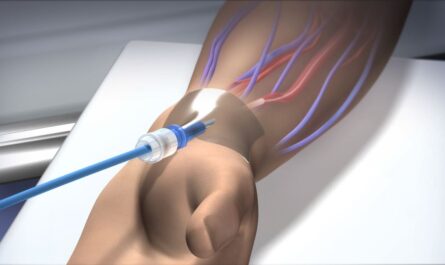A new study conducted by researchers from the University of Pennsylvania School of Veterinary Medicine has shown promising results in restoring cone function in dogs with retinal disease. The study, which utilized functional magnetic resonance imaging (fMRI), offers valuable insights into the potential for using cell replacements to restore cone vision.
Cone cells are responsible for color vision, daylight vision, and the perception of small details in the retinas of human eyes. Researchers Gustavo D. Aguirre and William A. Beltran have been studying inherited retinal diseases for years and have previously demonstrated that missing cone function can be recovered by reintroducing a copy of the normal gene in photoreceptor cells.
The current study focused on assessing daylight vision using a canine model as dogs are also affected by retinal disease. The researchers used fMRI to measure brain responses to lights that stimulate only the cone cells in dogs with different types of retinal disease and dogs with normal vision.
The findings, published in Translational Vision Science & Technology, showed that fMRI can detect brain responses to both black and white and color information related to daylight vision. Additionally, the study identified the specific area of the visual cortex that responds to stimulation of cone-rich regions in the dog retina, similar to the human fovea. The researchers also found that fMRI can be used to measure the degree of loss of daylight vision.
Furthermore, the study demonstrated the potential of gene augmentation therapy in treating retinal diseases. By using fMRI, the researchers showed that gene therapy restored the response in the cortex to black and white stimulation in animals with a retinal disease caused by a mutation in the NPHP5 gene. This offers promising prospects for studying photoreceptor cell replacement as a treatment for retinal diseases in the future.
The use of canine models in studying retinal diseases is advantageous due to the variety of naturally occurring genetic disorders observed in dogs. The researchers hope to first demonstrate the successful treatment of these disorders in canines before translating the findings to human patients. This way, therapeutic approaches can potentially benefit both humans and animals.
Lead author of the study, Huseyin O. Taskin, explains that the goal is to provide effective treatments for canines, which can then be made available to veterinarians. This would significantly benefit dogs affected by retinal diseases. The study’s co-author, Geoffrey K. Aguirre, emphasizes that understanding the level of vision function before treatment is crucial in assessing the effectiveness of retinal disease treatments.
Co-author William A. Beltran highlights that the study demonstrates the potential of gene therapy in restoring cone function in animals with no prior cone function. In the specific retinal disease caused by the NPHP5 mutation, the presence of cones is impaired. Animals with this disease are born day-blind but initially retain some night vision. However, over time, the rods – the photoreceptors responsible for night vision – gradually diminish, resulting in full blindness within a year.
Overall, this study represents a significant advancement in understanding the potential for restoring cone function in retinal diseases. The use of fMRI provides valuable insights into the assessment of daylight vision and the efficacy of gene therapy as a potential treatment. Further research and clinical trials are needed to explore the translation of these findings into therapeutic approaches for both humans and dogs.
*Note:
1.Source: Coherent Market Insights, Public sources, Desk research
2.We have leveraged AI tools to mine information and compile it



